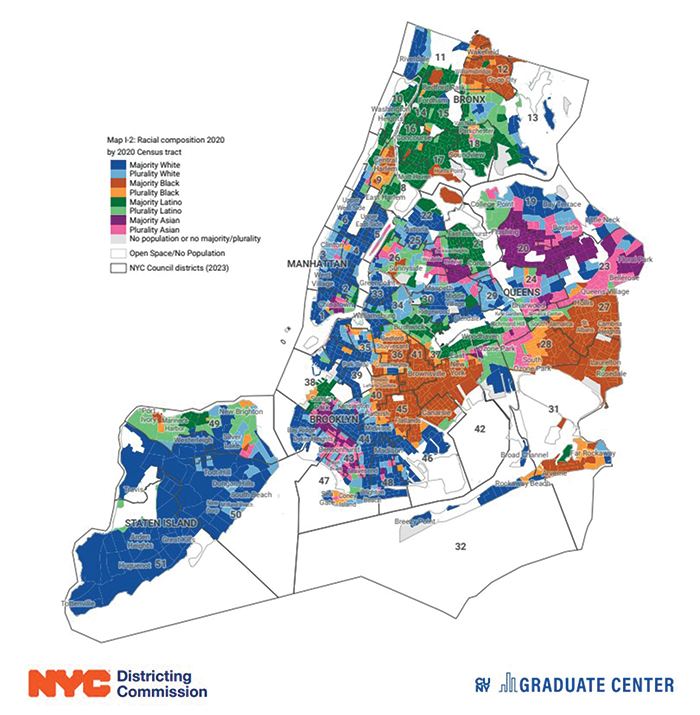Courtesy of City Districting Commission
By Michael V. Cusenza
The City Districting Commission and CUNY Research Consortium on Monday released a study of NYC’s evolving and emerging neighborhoods.
The Districting Commission is legally required to consider communities of interest when drawing City Council district lines. With the new Council lines having been drawn, the report identifies and analyzes emerging communities of interest across the five boroughs.
For the purposes of the study, researchers defined a community as a group of people who share some-thing in common, live together in the same place, or both.
The report noted the following key trends:
- The city’s population and voting age citizenry grew between 2010 and 2020, but future growth trends are less clear as the impacts of COVID play out and the city gradually ages.
- The racial makeup of the overall population and “citizens of voting age population” (i.e., those who are eligible to vote, referred to as CVAP) CVAP continued to shift, as the white and Black populations declined and Asians and Latinos grew, driven by immigrants and their native born descendants. The map on the cover of this report shows their current spatial distribution.
- The patterns across the broad racial groups within the population and CVAP have been driven by distinctive trends among the specific ethnic groups that make them up: some of these ethnic groups have been declining while others are growing, some rapidly.
- These ethnic groups have also been shifting their spatial concentrations across the city, driving neighbor-hood change and increasing neighborhood diversity. The racial intermarriage is also increasing.
- All groups experienced an increase of real household income per capita and educational and occupation-al attainment, but at different rates.
Section 4 of the report notes that Queens has become the epicenter of Asian New York, providing home to 49 percent of the city’s Asian population. More than half of the population of Queens is Asian (27 percent) or Latinx (28 percent), with 23 percent white and 16 percent Black. Brooklyn has the second highest Asian population share (26 percent) followed by Manhattan (17 percent), Bronx (5 percent), and Staten Island (4 percent). However, the ethnic composition and concentration of Asian New Yorkers varies a great deal across the boroughs. Not surprisingly, given that it is the largest Asian ethnic group, the Chinese make up large shares of the Asian populations of Manhattan (52 percent), Brooklyn (65 percent), and Staten Island (48 percent). Even in hyper-diverse Queens, the Chinese make up 40 percent of its sizable Asian population. The Asian population in the Bronx is small, but it is majority South Asian, with only 12 percent of the borough’s Asian population being Chinese. Queens is home to an overwhelming majority of Nepalese (86 percent) and Indonesian (82 percent) New Yorkers. In addition to these small ethnic groups, a majority of New York’s sizable Asian ethnic groups including Asian Indians (60 percent), Koreans (58 percent), Bangladeshis (67 percent), Filipinos (62 percent), Thais (67 percent) and Burmese (65 percent) call Queens home.
Also, the study shows that t the decline of the city’s Black (-1.84 percent) and white (-1.75 percent) populations was offset by substantial net growth of the Asian (14.45 percent) and Latino (3.42 percent) populations, yielding the modest overall gain (2.2 percent).

